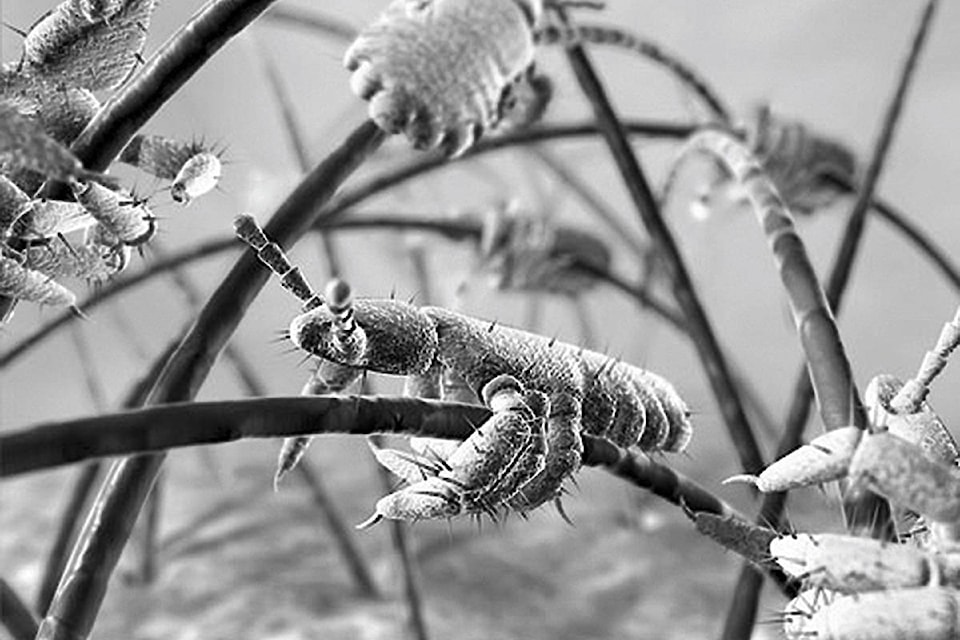An mother in Abbotsford recently discovered that her daughters’ scalps had been invaded by head lice.
She posted many questions in a local social-media group: What other steps are required after administering the first treatment? Are a daily wash of bed and pillow sheets required? Does she need to keep her kids off of the furniture? Are haircuts necessary?
If you’re completely repulsed at this point in the article, turn back. If not, check out these lice facts.
Head lice are tiny, greyish-brown, wingless insects which suck blood out of human scalps. The creepy-crawlers lay eggs, about one-third the size of a sesame seed, which attach themselves to strands of hair, and take nine to 10 days to hatch.
While the amount of people who contract lice annually is not exact, the Centers for Disease Control and Prevention estimate there are between six and 12 million cases in the U.S. each year among children aged three to 11.
The most common ways the insects spread are through hair-to-hair contact. Schools, sitting in close proximity to others, sleeping in the same bed, and sharing combs, brushes or towels, are all common methods of travel for the venturing louse, according to healthline.com.
The insects do not cause illness or disease, but they can be extremely itchy, spread easily from person to person and cannot be removed without treatment. If you or your child have contracted the bugs, don’t worry, it’s not a sign of poor hygiene – anyone with hair can get them.
Lice rarely leave the scalp, and if they do, they can only survive for a day or two without feasting on another human head. They are not generally spread through furniture, pets or carpets; there is no evidence to suggest that a major cleaning of the house and vehicle are necessary, according to HealthLinkBC.
Hats, pillows, combs and brushes used by the infected person in the last two days should be washed in hot soapy water. But further washing is only necessary if live insects are present after a round of treatment. Unwashable items should be placed in a plastic bag for two weeks, or frozen for two days.
Two basic treatments for exterminating the lice are the wet-combing method or topical-chemical applications.
The wet-combing method is less expensive but takes a bit longer. It prescribes using a generous amount of conditioner to freeze the movement of the insects and combing the hair with a specialized comb every four days, for at least two weeks. If lice are still present on the comb after two weeks, continue the treatment for another cycle. The comb should be washed with hot water and soapy after each use.
This method is safer for infants, young children, and pregnant and nursing mothers, according to HealthLinkBC.
Chemical treatments use shampoos, creams, rinses and sprays, available at local pharmacies, which contain a lice-killing ingredient. After the application, check the hair for eggs and dead lice and remove manually with a comb. The chemical treatments recommend a second cycle a week to 10 days after the first to ensure the next round of eggs are destroyed.
Head lice have been known to develop resistance to chemicals, so if the products are not working, it’s recommend to switch to the wet-combing method.
HealthLinkBC recommends that you should absolutely not try and MacGyver the lice away by using things like motor oil, gasoline, alcohol, insect sprays, flea soaps, dyes or bleaches, garlic, essential oils, electric lice combs or shaving heads.
If your not sure what the best method to use is, contact your health professional – as with anything else.
RELATED: Neglected horses seized from B.C. property after cruelty investigation
RELATED: Abbotsford police send out safety reminders for back to school
